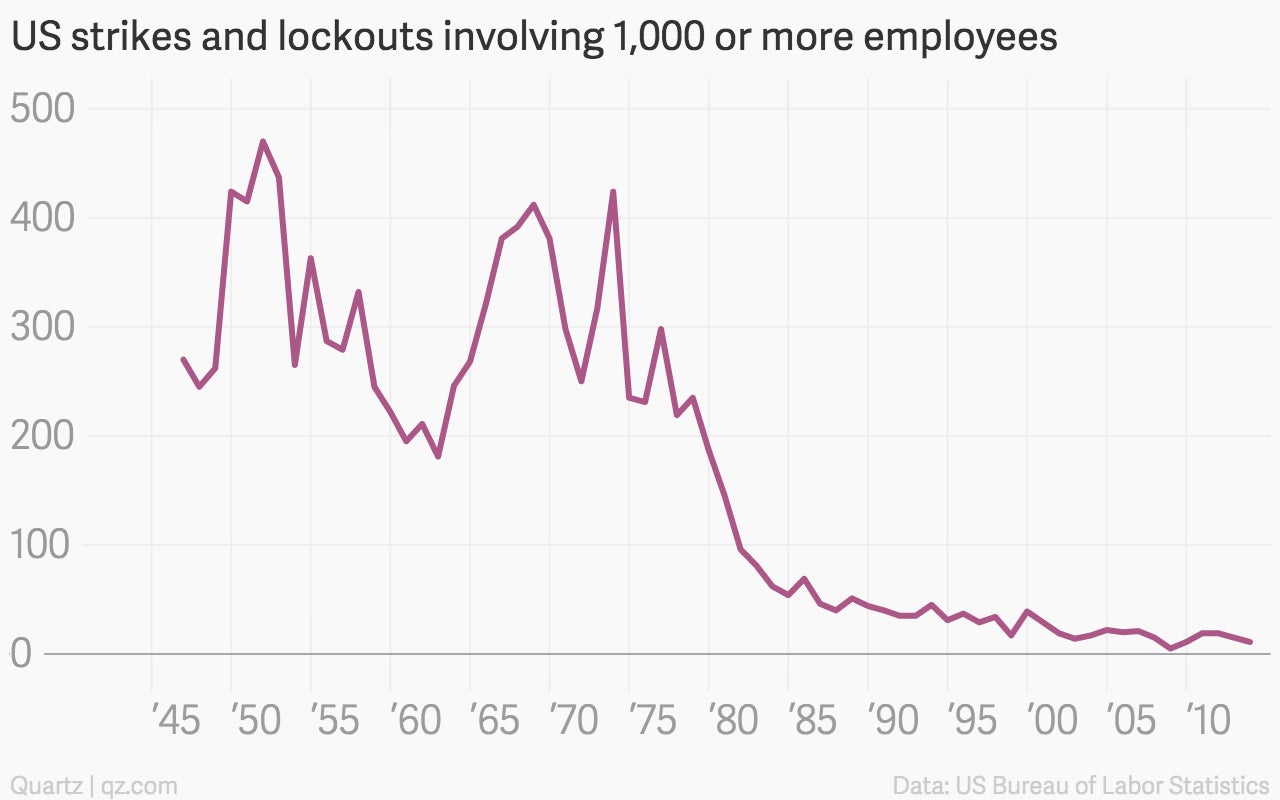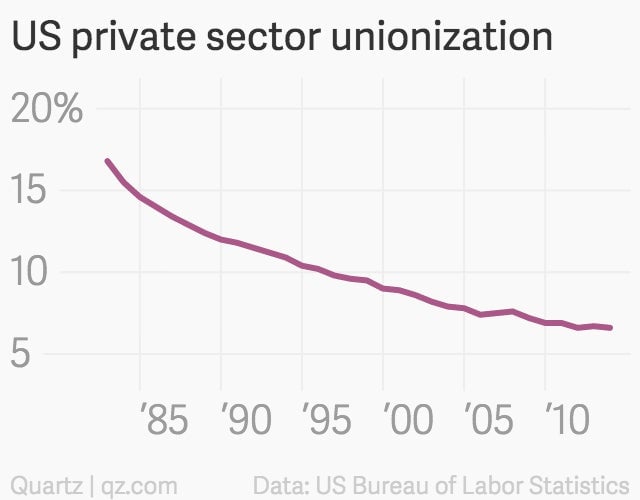American labor-union strikes are almost completely extinct
In the US, the strike is pretty much extinct.


In the US, the strike is pretty much extinct.
In 2014, there were only 11 strikes or lockouts in the US involving more than 1,000 workers. That was down from 15 the previous year, and tied for the second-lowest total on record, according to just-released numbers from the US Bureau of Labor Statistics.
You don’t have to be a professor of labor relations to discern a pattern.

“It’s all wrapped up in long-term trends in unionization,” says Jake Rosenfeld, a University of Washington sociology professor and author of What Unions No Longer Do. “Strikes are just incredibly risky these days.”
This wasn’t always the case. In the early 1950s, the US experienced hundreds of large-scale labor fights each year. The peak was 1952, when there were 470 of them, involving nearly 2.8 million workers in total. That meant that roughly 4.5% of the entire civilian labor force was involved that year. (Compared that to 2013, when 0.04% of the US labor force was involved in a large-scale work stoppage.)
“Unions really had tremendous bargaining power because they represented most of the people in the major productive industry and most of the people in the highly skilled industries,” says Charles Craver, a law professor at George Washington University and former labor attorney.

So what changed? A lot. American industry—a traditional bastion of strength for unions—has shrunk as a share of the overall economy. The decline of trade barriers and the rise of globalization made it easier for companies to outsource jobs. And employers have become much more aggressive and effective on countering the growth of unions.
The result? Private sector union membership has declined precipitously. At the end of 2014, it was roughly 6.6%. Back in 1983 it was roughly 17%. In the 1950s, it hovered around 30%. (Today, US labor union strength is centered in the public sector, where roughly 36% of workers were in unions in 2014.)
Now, if there’s any good news for American unions, it’s that perhaps their bleakest days are behind them. America’s job market is improving, and traditionally that bolsters the position of organized labor. Labor activities around the West Coast ports as well as US oil refineries are in the news. And perhaps most heartening for union supporters, public opinion towards organized labor has bounced back a bit, with about 51% of Americans now saying they had a favorable view of unions, the highest favorability rating since 2007. Unfortunately, thats still far below 63% of Americans who viewed unions favorably back in 2001.